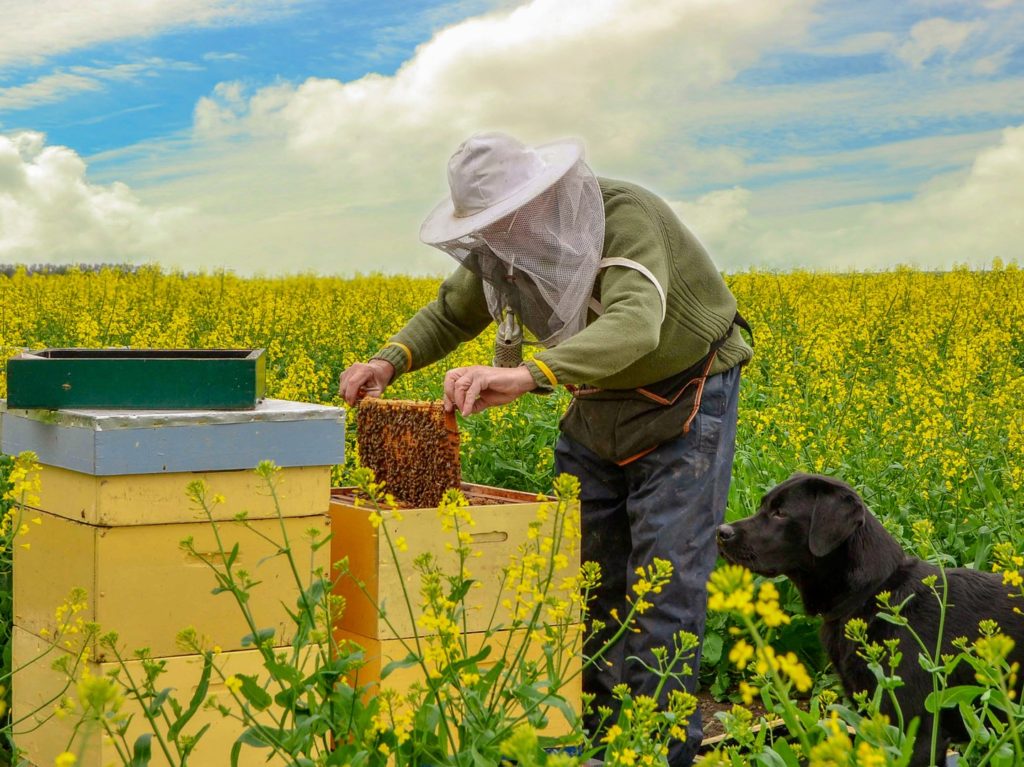What is spring management and what does it mean for you and your beehive?
Spring has sprung and you – and your bees – are about to get very busy. Good spring management practices are essential. Here’s an overview of what will keep the average beekeeper busy in spring.
Regular Hive Inspections Are Key to Spring Management
As the weather warms and your colony is growing you will need to keep a closer eye on your hive. As a rule, you should inspect you hive as soon as possible in the spring and continue inspections every seven to ten days throughout.
Always inspect your hives on fine, mild days to minimise stress to your honey bees. Never open your hive in very windy, wet or otherwise unpleasant conditions.
These inspections will inform all other spring management practices.
Assessing Your Queen(s) – The First Task in Spring Management
On your first inspection in spring you need to check on your queen. It is important to review her egg-laying performance as early as possible.
There are several signs that your queen is not doing too well. These include poor brood distribution, the laying of drones only, or workers laying eggs.
As we mentioned in our recent post 6 Essential Beekeeping Steps to Prepare for Spring Build-Up, it’s good to have a queen supplier lined up in advance in case you do need a replacement. If you haven’t got one yet, a list of Australian queen breeders is available via Aussie Apiarists Online.
Supporting Spring Colony Growth Through Nutrition
In the first inspection and onwards you will also need to check on your hive’s honey stores. If the winter honey stores have been consumed you probably need to supplementary feed your bees sugar syrup.
Remember, if colony numbers are still low, the older bees may not be able to forage enough to support optimal growth. You also should consider whether enough floral resources are available in your area.
Alternatively to feeding sugar syrup, you can add back any honey frames saved from the same hive when you prepared it for winter. Do not feed honey from another hive unless you are 100% certain it is disease free.
You can also give the hive a great boost for the spring build-up by feeding pollen, or pollen/protein substitutes.
And of course, make sure a reliable water source will stick around as the weather warms up!
Shop: Western Australian Irradiated Pollen and FeedBee
Related: When Should I Feed My Bees?
Replacing or Adding Hive Components
You will also need to check if any combs need replacing when you first open your hive. Early spring is a good time as some brood box combs may be empty or almost empty.
Remove any old, dark, thick, heavily gnawed or broken combs. Combs with too many drone cells can also be removed or relocated to a honey super.
Then, as the brood grows you will need to identify when to add a honey super. You’ll want to make sure you don’t add it too early or too late.
The Australian Beekeeping Guide rule of thumb is that when the hive cover is removed and bees “virtually bubble over the sides of the box”, a super is likely necessary.
Shop: Beehive Components
Swarm Prevention and Management – Don’t Lose Your Bees!
According to the Australian Beekeeping Guide, the impulse to swarm is strongest in spring and early summer.
This is a primary reason for inspecting your hives regularly. You’ll need to keep an eye out for the signs that your hive is going to swarm so that you can prevent or prepare to capture a swarm or you could lose half your colony!
Ian at Bee2bee can collect swarms and re-home one in your own new hive or relocate it to an apiary elsewhere. He can also connect you with other swarm removal services if necessary. If you have a swarm you can’t manage, or need advice, give him a call on 0437 902 749.
Keeping an Eye on Brood Health
As our recent series on brood diseases indicates, there are many nasties that could endanger your honey bee colony. Inspecting the brood is integral to good spring management.
Depending on which state you’re in, you’ll need to watch out for signs of American Foulbrood, European Foulbrood, Chalkbrood, Sacbrood, and the rare Stonebrood in the brood combs.
Remaining Vigilant for Other Pests and Diseases
Of course, you’ll want to keep an eye out for signs of other pests and diseases in the hive. Tropical areas have to deal with hive beetles, for example, and the effort to keep Australia Varroa Mite free is ongoing.
Every beekeeper needs to remain informed and vigilant. We will be posting about more pests and diseases in detail here on The Buzz in future. Other recommended resources are the BeeAware website and the Australian Beekeeping Guide.
Related: 6 Essential Beekeeping Steps to Prepare for Spring Build-Up

Visit the Bee2Bee online shop for beekeeping equipment and supplies.




